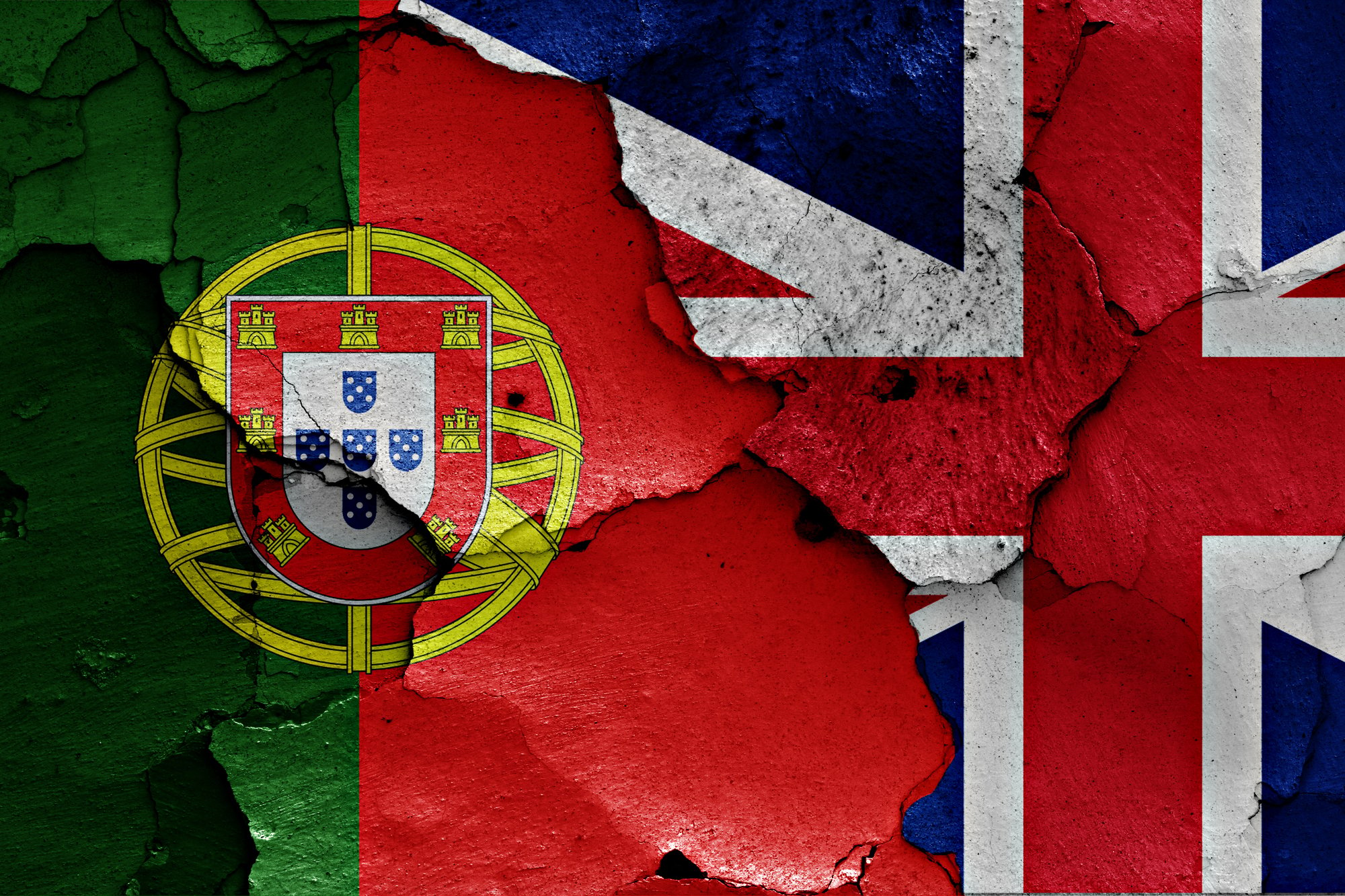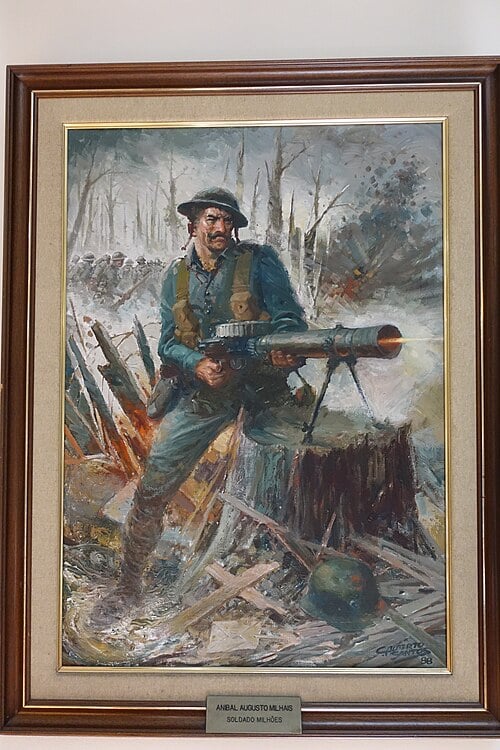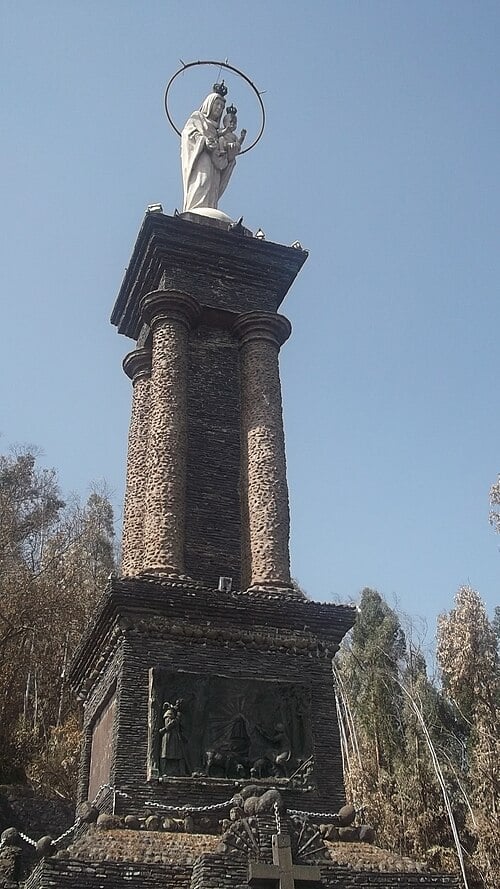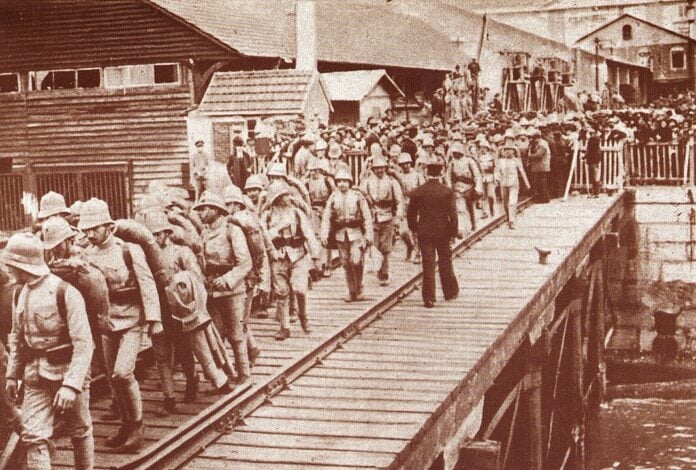We recently covered Portugal’s role in World War II. During our World War II research, we realized that it was important to go even further back in Portuguese history and talk about The Great War, also known as World War I. Portugal’s role in World War I is often summarized in a single sentence about the Battle of La Lys. The real story is far richer and stretches from the trenches of Flanders, the savannas of Angola, the river valleys of Mozambique, and even out into the Atlantic around the Azores and Madeira. Here are 16 lesser-known facts that reveal how widely and deeply the war touched Portugal.
1. Portugal was pulled into the war after seizing 36 Central Powers ships in Lisbon.
Although the Portuguese Republic initially declared neutrality in 1914, it honored a British request in February 1916 to requisition German and Austro-Hungarian merchant ships lying in Portuguese ports. Portugal boarded and took control of 36 vessels in Lisbon, a move that triggered a German declaration of war on March 9, 1916 and formally brought Portugal into the conflict on the Allied side.

2. The Portuguese Expeditionary Corps put around 55,000 men on the Western Front.
Portugal raised the Corpo Expedicionário Português (CEP), an expeditionary force of roughly 55,000 troops, who began arriving in France in early 1917. By November, the CEP was holding a contiguous sector of the front under British First Army control, after undergoing further training and reorganization in France to fit British patterns of trench warfare.
3. Portugal also sent heavy railway artillery that fought under French command.
Alongside the infantry, Portugal created the Independent Heavy Artillery Corps operating railway guns supplied by France and Britain. The French designated it the Corps d’artillerie lourde portugais (CALP) and integrated Portuguese gunners directly into French heavy-artillery operations.
4. The Portuguese held an 18-kilometer sector and were equipped with British supplies and equipment.
From November 1917, the CEP took responsibility for an approximately 18-km frontage in French Flanders. Once deployed, Portuguese units trained for trench warfare and were issued British rifles and equipment before taking over their sector between Neuve-Chapelle, Laventie, and nearby villages.
5. La Lys, April 9, 1918: The German barrage combined explosive shells with poison gas
At about 4:15 a.m. on April 9, 1918, the German Sixth Army launched Operation Georgette with a four-and-a-half-hour artillery bombardment of the Portuguese sector. The barrage mixed conventional explosive shells with poison gas, which blended with the morning fog and disrupted communications. When the infantry attack followed, the weakened defenses quickly collapsed in several areas.
6. One of Portugal’s greatest battlefield heroes covered the retreat alone.
During the same battle, Aníbal Milhais, nicknamed “Soldado Milhões” for being “worth a million men,” used a Lewis gun to delay German assaults and help fellow Allied troops withdraw. He became Portugal’s most decorated World War I soldier and received the Military Order of the Tower and Sword.

7. Portuguese losses at La Lys were counted more in prisoners than in dead.
La Lys was a national trauma, yet the grim arithmetic often surprises readers: deaths among the Portuguese that day were in the low hundreds, while more than 6,000 men were captured. The result was the CEP’s temporary dismembering as a fighting formation by British command.
8. Even after La Lys, Portuguese troops fought on through the Armistice day.
The CEP continued to serve in France through 1918. On November 11, 1918, a Portuguese company helped force a crossing of the Scheldt just before the ceasefire took effect. By the Armistice, the CEP’s cumulative losses included 2,160 dead, 5,224 wounded and 6,678 captured, roughly 14,000 casualties from an establishment of near 60,000.
9. Portugal has a national World War I cemetery in northern France.
The Portuguese Military Cemetery at Richebourg in Pas-de-Calais holds 1,831 graves, which consolidated burials of CEP soldiers from across France, Belgium, and POW camps. It is the only Portuguese military cemetery in France and remains a focal point for commemorations of La Lys.
10. The war reached Portuguese soil: German U-boats shelled Madeira three times.
The city of Funchal on Madeira was shelled by U-38 on December 3 and December 16, 1916, sinking ships in the harbor and bombarding the town, and again by U-156 and U-157 on December 12, 1917. Civilians were killed and wounded, and a memorial sanctuary, Nossa Senhora da Paz, was later erected overlooking the city.

11. A Portuguese trawler fought a two-hour duel with Germany’s top U-boat ace.
On October 14, 1918, the converted naval trawler NRP Augusto de Castilho shielded the passenger steamer São Miguel from U-139. It was commanded by ace Lothar von Arnauld de la Perière. Outgunned by the submarine’s 150-mm weapons, the trawler fought for hours until sunk. Its commander, Carvalho Araújo, was killed, but the steamer escaped to the Azores.
12. The first Azores attack prompted the creation of a U.S. naval base at Ponta Delgada.
On July 4, 1917, U-155 shelled Ponta Delgada on São Miguel in the Azores. Within weeks the United States dispatched USS Panther and destroyers and created Naval Base 13 to safeguard mid-Atlantic routes and deny Germany a forward foothold. American Marines and naval air units operated from the archipelago through 1919.
13. Portugal fought early and hard in Africa, starting with the Naulila crisis in Angola.
Months after war began in Europe, a German column from German South-West Africa crossed into Angola in October 1914 without authorization, which set off the Naulila incident. Fighting escalated and culminated in a German victory at Naulila on 18 December 1914 against Portuguese colonial forces.
14. In Mozambique, Lettow-Vorbeck’s veterans crushed a Portuguese force at Ngomano.
Looking for supplies after hard fighting against the British, Paul von Lettow-Vorbeck led German East African troops across the Rovuma River into Portuguese East Africa and defeated the garrison at Ngomano on November 25, 1917. From there, the Germans lived off Allied stores and continued a mobile campaign deep inside Mozambique.
15. The human cost was heavy, especially from disease in Africa.
Across all fronts, U.S. War Department records list about 100,000 Portuguese troops mobilized and 33,291 total casualties. Portuguese sources point to at least 6,232 confirmed deaths, with some estimates reaching as high as 8,787. Of these, between 5,533 and 5,732 occurred in Africa, where disease proved to be an especially deadly threat.
16. War strain reshaped Portuguese politics and mobilized women on the home front.
The war years saw deep political upheaval. In December 1917, Sidónio Pais seized power in a coup and presided over a short-lived “New Republic” before being assassinated in December 1918, which left the country in turmoil. At the same time, women organized to support the war effort: the Portuguese Women’s Crusade, founded on March 20, 1916 by Elzira Dantas Machado and others, trained nurses and coordinated relief for soldiers and families.
Final Thoughts
Portugal’s First World War story does not fit neatly into a single battlefield narrative. It includes the decision to defy Berlin by seizing ships in Lisbon, the creation of a sizable expeditionary corps that fought and bled in Flanders, a heavy rail-artillery arm that worked with the French, and a home front that absorbed U-boat bombardments on Madeira and the Azores. It features colonial campaigns in Angola and Mozambique where disease and logistics were as deadly as bullets, and it reaches into Portuguese political life, where the strain of war tilted the Republic off balance. The names inscribed at Richebourg and the monument on Lisbon’s Avenida da Liberdade are the most visible markers, but the legacy runs through memorials across the country and through families whose histories still trace back to these events. After Portugal’s horrific experience during the Great War, it is not surprising that they decided to remain neutral during World War II.


